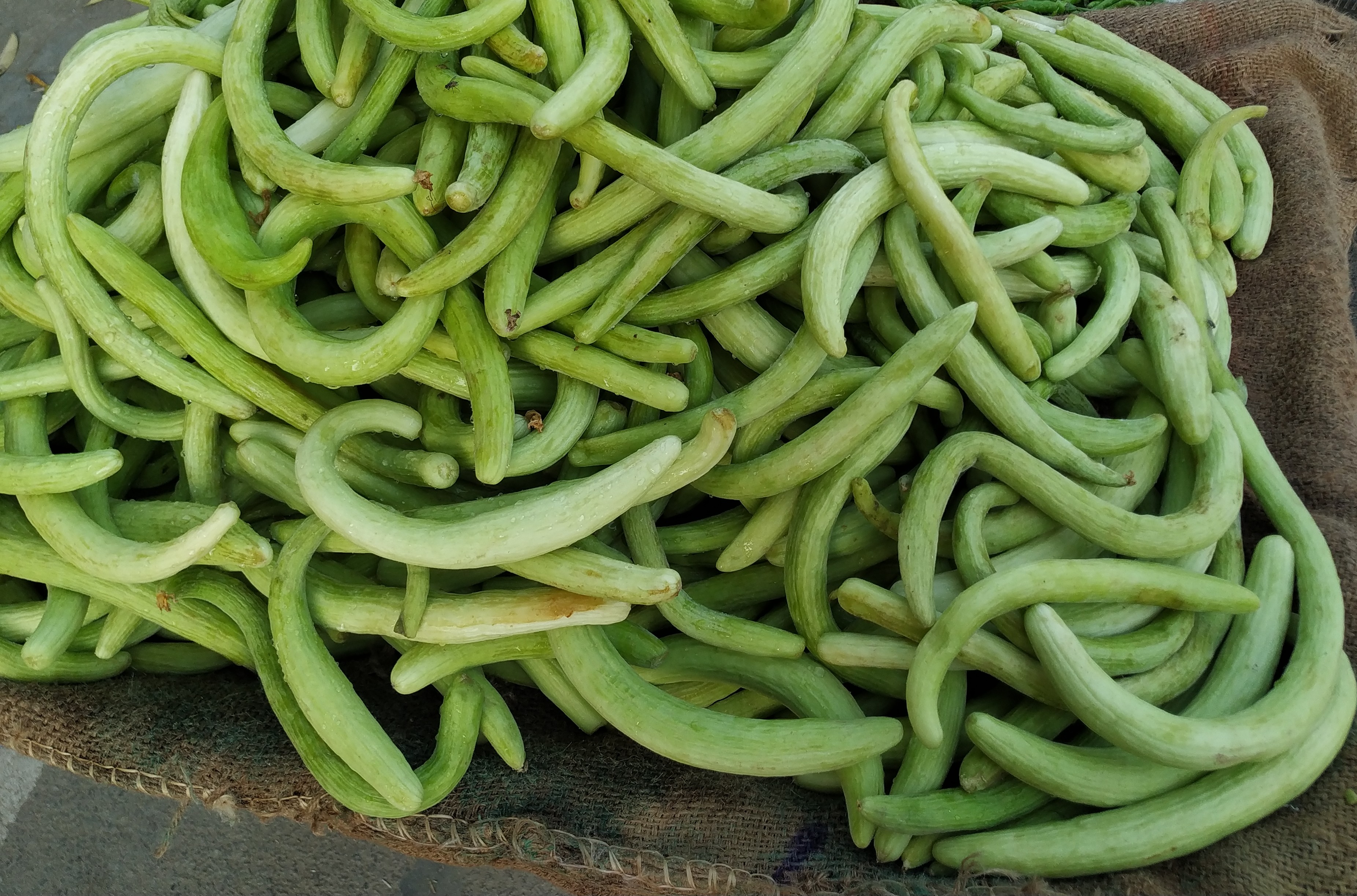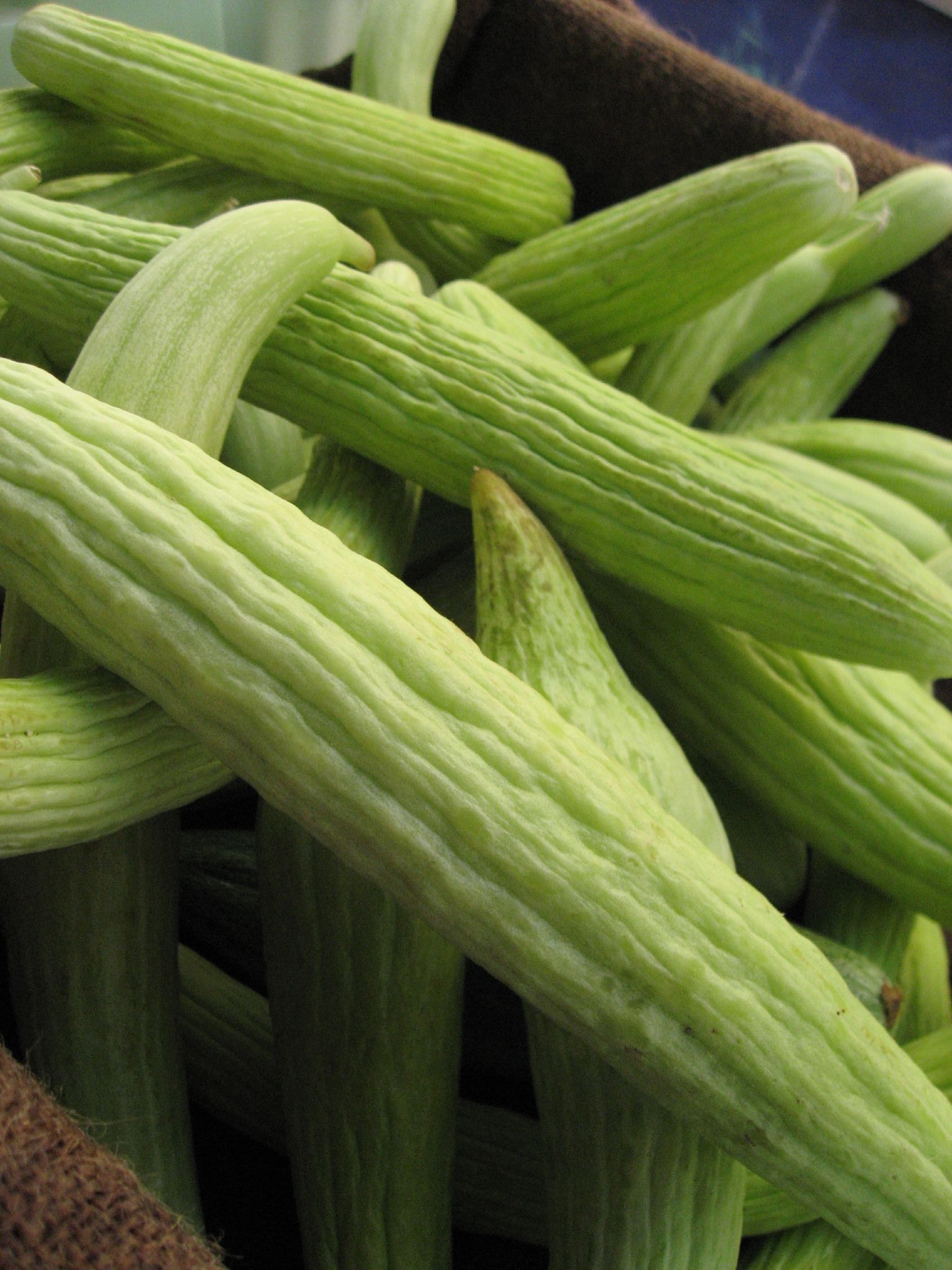Snake Melon on:
[Wikipedia]
[Google]
[Amazon]
The Armenian cucumber, ''Cucumis melo'' var. ''flexuosus'', is a type of long, slender fruit which tastes like a 
 The Armenian cucumber grows approximately long. It grows equally well on the ground or on a
The Armenian cucumber grows approximately long. It grows equally well on the ground or on a
Plants for a Future database
*
Fact sheet from the University of Florida (with photo)
Cucurbitoideae Fruit vegetables Flora of Armenia Flora of Azerbaijan Flora of Turkey Taxa named by Carl Linnaeus {{vegetable-stub
cucumber
Cucumber (''Cucumis sativus'') is a widely-cultivated Vine#Horticultural climbing plants, creeping vine plant in the Cucurbitaceae family that bears usually cylindrical Fruit, fruits, which are used as culinary vegetables.
and looks somewhat like a cucumber inside. It is actually a variety of muskmelon (''C. melo''), a species closely related to the cucumber (''C. sativus''). It is also known as the yard-long cucumber, snake cucumber, snake melon, in Persian, in Kurdish, in Semnani,
in Japanese, in Turkish, in Hindi, in Punjabi, in Arabic, or in Italian. It should not be confused with the snake gourds (''Trichosanthes'' spp.). The skin is very thin, light green, and bumpless. It has no bitterness and the fruit is almost always used without peeling. It is also sometimes called a ''gutah''.

Description
 The Armenian cucumber grows approximately long. It grows equally well on the ground or on a
The Armenian cucumber grows approximately long. It grows equally well on the ground or on a trellis
Trellis may refer to:
Structures
* Trellis (architecture), an architectural structure often used to support plants (especially vineyards)
* Trellis drainage pattern, a drainage system
Technology
* Trellis (graph), a special kind of graph used ...
. Armenian cucumber plants prefer to grow in full sun for most of the day. The fruit is most flavorful when it is long. Pickled Armenian cucumber is sold in Middle Eastern markets as "pickled wild cucumber".
History
Fredric Hasselquist, in his travels in Asia Minor, Egypt, Cyprus andSyria
Syria ( ar, سُورِيَا or سُورِيَة, translit=Sūriyā), officially the Syrian Arab Republic ( ar, الجمهورية العربية السورية, al-Jumhūrīyah al-ʻArabīyah as-Sūrīyah), is a Western Asian country loc ...
in the 18th century, came across the "Egyptian or hairy cucumber, ''Cucumis chate''", commonly known today in Egypt as "atta" (classical قِثَّاء or قُثَّاء (qiṯṯāʾ or quṯṯāʾ). It is today included in the Armenian variety. It is said by Hasselquist to be the “queen of cucumbers, refreshing, sweet, solid, and wholesome.” He also states “they still form a great part of the food of the lower-class people in Egypt serving them for meat, drink and physic.” George E. Post
George Edward Post (1838–1909) was an American surgeon, academic and botanist.
Biography
George Edward Post was born in New York City on December 17, 1838, the son of Alfred Charles Post.
He was a Professor of Surgery at the Syrian Prot ...
, in '' Hastings' Dictionary of the Bible'', states, “It is longer and more slender than the common cucumber, being often more than a foot long, and sometimes less than an inch thick, and pointed at both ends.” The ''Cucumis melo'' subspecies Chate was the most frequently encountered cucurbit in ancient Mediterranean images and texts, and was most likely the type of cucumber grown year-round for Emperor Tiberius of 1st century Rome.
A study published in 2018 concluded that melon yields in Israel can be improved by selection of local landraces. The study examined landraces collected from 42 fields, finding extensive variations in certain traits that could be cultivated to improve the local production.
References
External links
Plants for a Future database
*
Fact sheet from the University of Florida (with photo)
Cucurbitoideae Fruit vegetables Flora of Armenia Flora of Azerbaijan Flora of Turkey Taxa named by Carl Linnaeus {{vegetable-stub